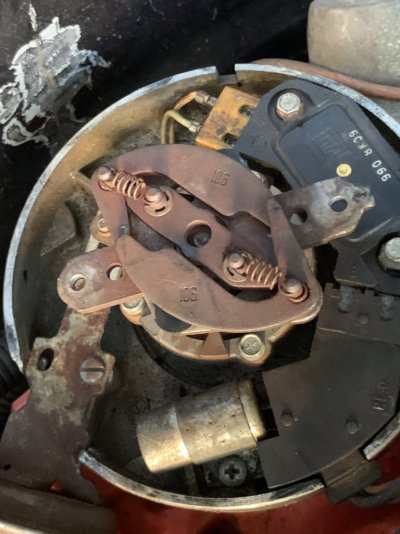If you want to measure timing beyond what shows on the pointer, you can install a timing tape on the balancer, which will have degree marks all the way around.
However, the easier solution is to use a dial-back timing light.
- You can just set the dial on the light to the timing you want (for example 12 BTDC), and when you point the light at the marks it should line up with zero on the tab if the engine is set to 12. If it does not line up, then turn the distributor until you get the light to line up on zero.
- The opposite method is to rev the engine up to the rpm where you want to measure total timing (maybe 3000 rpm), and turn the dial on the light until the mark on the balancer lines up with zero. Read the dial to find out the total timing reading.
Cheaper dial back lights have a physical dial like this one.
https://www.summitracing.com/parts/ino-3555
More expensive ones have a digital readout, and usually also have a tachometer.
https://www.summitracing.com/parts/ino-5568
Always start out with the vacuum advance line (from the carburetor) plugged, and the idle set down to about 600-650. Measure your base timing at that rpm. Then slowly rev it up to about 3000 rpm, keeping track of how fast the timing advances and the max value it reaches for total timing. If the mechanical comes in quicker (maybe by 2000 rpm) it will improve acceleration. Subtract base timing from total and you have your mechanical timing.
Then finally let it go back to idle and reconnect the vacuum advance. Measure timing with advance connected, subtract base timing, and you have vacuum advance timing. It should be about 18-20 degrees on most stock distributors.
The full manifold vacuum port on the carburetor will pull on the vacuum advance all the time, but of course vacuum will still vary with engine throttle opening. Since idle and light throttle cruise both have high vacuum, you will get max advance at idle or at light cruise. The advance at cruise helps a lot with improving gas mileage.
- The "timed" vacuum port will have no vacuum at idle, but will start to have high vacuum as you slowly press the accelerator. Once you get a little past idle it will operate the same as a full vacuum port. It was used for many emissions controls because some devices needed zero vacuum at idle.
You can usually tune your engine to use either port, but may need to make some idle adjustments if you switch. Full vacuum at idle means the timing is also advanced and the idle speed goes up. If you use timed vacuum you may have to adjust the idle speed higher.


